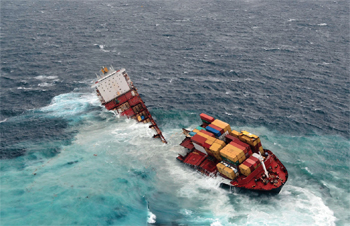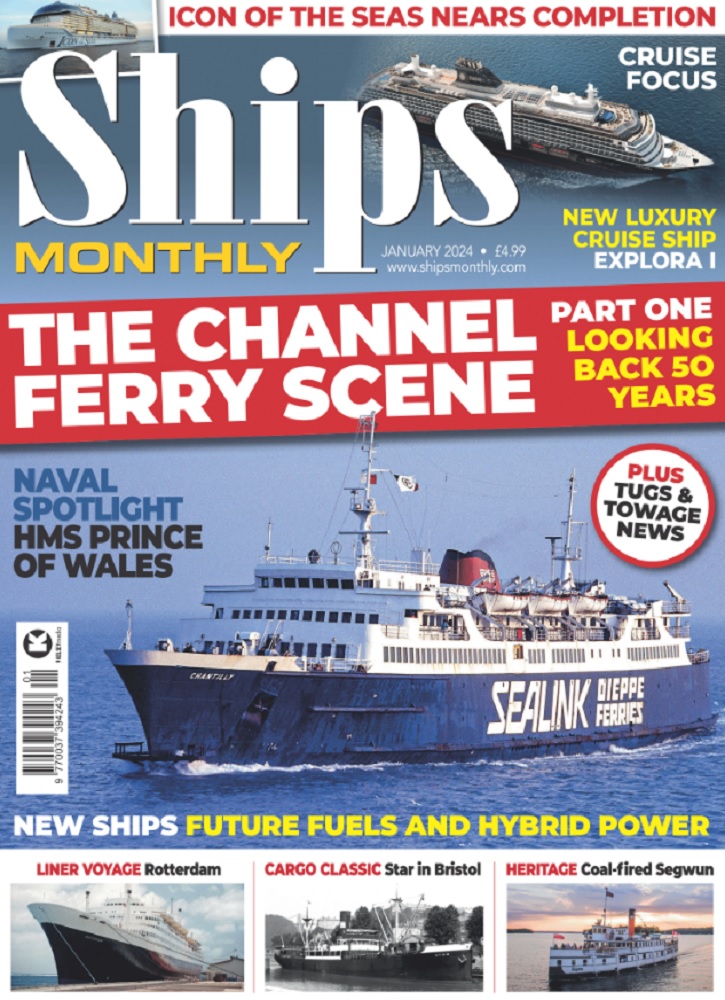The losses of two large ships over the past few months due to apparent human error have made marine salvage work front-page reading. The break-up and loss of the stern section of the stricken container ship Rena on New Zealand’s Astrolabe Reef (see SM, Jan) was almost a certainty once it was realised that the ship could not be quickly removed from its position.
Preliminary salvage surveys had disclosed that the vessel had been driven well up on the reef at the bow, but that the stern section had been left cantilevered out from the reef, to a depth of over 56m at the aftmost point. This left a ‘hinge point’ that, in heavy weather, continued to work against the vessel’s integrity.
In January the ship began breaking up, with the stern section eventually separating and taking a lower position on the submerged reef. Fortunately, the intervening three months allowed a substantial amount of fuel oil and 463 containers to be lifted off, although 98 had fallen off prior to salvage operations and an estimated 150 fell when the hull split in two. At the end of January it was estimated that there were still about 600 boxes left on the two pieces of the ship.
Salvers, headed by Svitzer, managed to remove approximately 1,300 tonnes of oil from the ship during the fuel recovery phase, but approximately 400 tonnes were lost. Under New Zealand law, the wreck and its cargo must be removed from the site, and thus salvage operations on the submerged stern section will have to be carried out by teams of specialist saturation divers at a daily cost of $150,000. Shipowner Costamare has confirmed that it and its insurers will continue to fund the salvage operation, including the recovery of containers.


